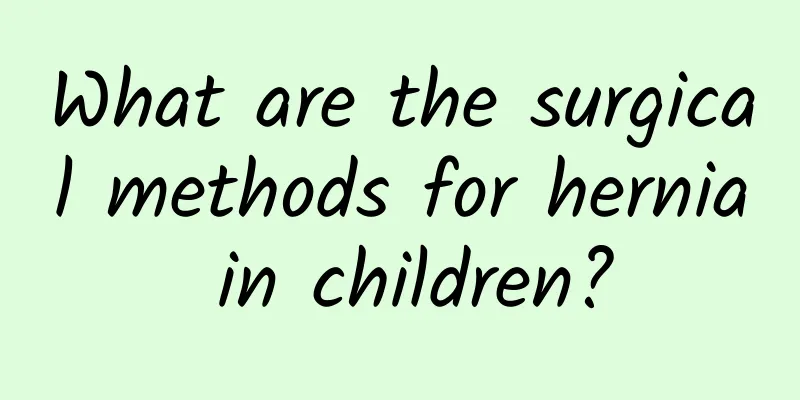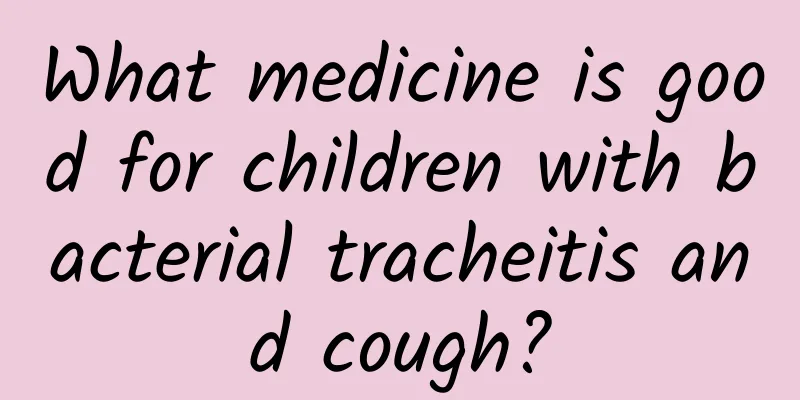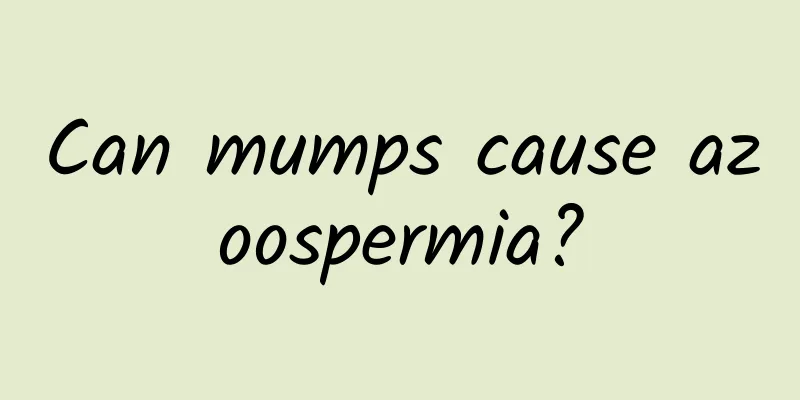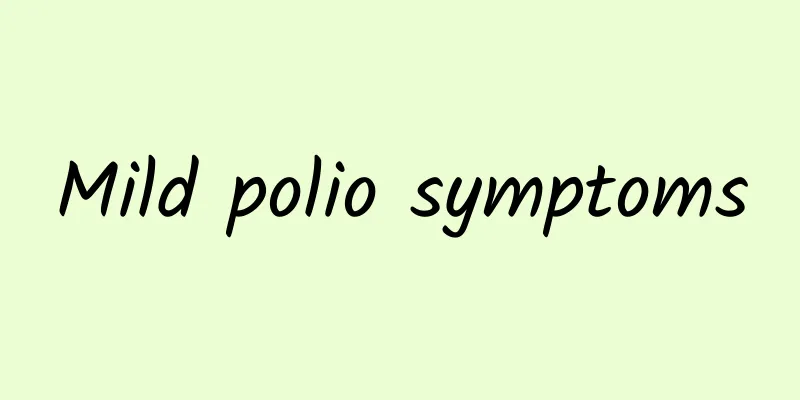What kind of disease is Kawasaki disease? What are the clinical symptoms and manifestations of Kawasaki disease?

|
Kawasaki disease, also known as mucocutaneous lymph node syndrome (MCLS), is an acute febrile rash disease in children with systemic vasculitis as the main lesion. It was first reported by Japanese doctor Tomisaku Kawasaki in 1967. Since this disease can cause serious cardiovascular lesions, it has attracted people's attention. The incidence has increased in recent years. In 1990, among the inpatients with rheumatic diseases in Beijing Children's Hospital, there were 67 cases of Kawasaki disease and 27 cases of rheumatic fever; in the same data from 11 hospitals in other provinces and cities, Kawasaki disease was twice that of rheumatism. Obviously, Kawasaki disease has replaced rheumatic fever as one of the main causes of acquired heart disease in children in my country. Kawasaki disease is currently considered to be an immune-mediated vasculitis. 1. Main symptoms Sudden fever, presenting as remittent fever or persistent fever, lasting for 5 to 11 days or longer (2 weeks to 1 month), with an average body temperature often reaching above 39°C, and antibiotic treatment is ineffective. Common bilateral conjunctival congestion, lip flushing, cracking or bleeding, and bayberry-like tongue are seen. About 1 to 4 days after the fever, polymorphic red macules appear on the trunk, especially the perineum, and may also present as urticaria-like rashes, with itching, but no blisters or scabs. After 1 week, the proximal ends of the fingernails or toenails are pale, and there is hard edema in the hands. The palms and soles of the feet are flushed early, and the skin is often tight and hard, without depression when pressed. After 10 days, characteristic large flakes of peeling appear at the junction of the nail bed and skin. About 2 months later, transverse grooves often appear on the fingernails and toenails. The course of the disease is often accompanied by acute, non-purulent, transient cervical lymph node swelling, which is most obvious in the front of the neck, with a diameter of more than 1.5 cm, mostly appearing on one side, with slight tenderness, occurring within 3 days after fever, and healing on its own after a few days. 2. Severe symptoms About 10 days after the onset of fever, when the rash, fever and other acute symptoms begin to subside, heart damage often occurs, and symptoms such as acute myocarditis, pericarditis, endocarditis, and arrhythmia occur. The patient is pale, cyanotic, weak, chest tightness, and precordial pain. Systolic murmurs, tachycardia, gallop rhythm, and dull heart sounds can be heard during auscultation. Cardiac damage is found in about 50% of cases through clinical, electrocardiographic, echocardiographic, and radiographic examinations. Echocardiography and coronary angiography can show that most patients have coronary artery aneurysms, pericardial effusions, left ventricular enlargement, and mitral valve regurgitation. X-ray chest films show enlarged heart shadows. Coronary artery aneurysms with a diameter of less than 8mm can retract; those with a diameter of more than 8mm cannot retract, and are prone to coronary stenosis or occlusion, causing myocardial infarction. 3. Other symptoms The main symptoms are arthritis or joint swelling and pain, iridotinitis, otitis media, pneumonia, aseptic meningitis, abdominal pain and diarrhea, mild jaundice or aseptic cerebrospinal meningitis. A small number of patients have hepatitis, gallbladder edema, intestinal paralysis and intestinal bleeding, pleural effusion, cranial nerve paralysis and encephalopathy. In the acute phase, about 20% of cases have perineum and perianal skin flushing and peeling, and erythema or scab reappears at the original site of BCG vaccination 1 to 3 years ago. Horizontal grooves can be seen on the nails during the recovery phase. 4. Characteristics of the course of disease The course of the disease varies in length, but the general course is as follows. The first stage is the acute fever stage, which generally lasts 1 to 11 days. The main symptoms appear one after another after the fever, and severe myocarditis may occur. The second stage is the subacute stage, which generally lasts 11 to 21 days. Most of the body temperatures drop, the symptoms are relieved, and membranous peeling appears on the fingertips. Severe cases may still have persistent fever. Coronary artery aneurysms may occur, which may lead to myocardial infarction and aneurysm rupture. The third stage is the recovery stage, which is generally in the fourth week, with a course of 21 to 60 days. Clinical symptoms subside. If there is no obvious coronary artery lesion, it will gradually recover; if there is a coronary artery aneurysm, it will continue to develop, and myocardial infarction or ischemic heart disease may occur. A small number of patients with severe coronary artery aneurysms enter the chronic stage, which may last for several years, leaving behind coronary artery stenosis, angina pectoris, heart failure, ischemic heart disease, and may be life-threatening due to myocardial infarction. 1. Causes of disease The cause of the disease is still unclear. From the perspectives of clinical, pathological, and epidemiological aspects, there are several theories: Infectious factors: 1. Streptococcal infection, such as the positive rate of polysaccharide antibodies and T protein antibodies of hemolytic streptococci in this disease, is about 30%, while the control group is negative. The purified polypeptide glycosides extracted from the cell wall of hemolytic streptococci are used for antigen-sensitized hemagglutination reaction. The titer of this disease is higher than that of rheumatic fever and scarlet fever. The titer of phytohemagglutinin test using hemolytic streptococcal cell extracts is also increased. Recent new clone studies on toxin products and pyrogenic exotoxins of toxic shock syndrome caused by hemolytic streptococcal infection have shown that hemolytic streptococci may be the cause of this disease. 2. Rickettsia and Chlamydia trachomatis infection Rickettsia and Chlamydia trachomatis were found in biopsy specimens from the rash area, so it was suggested that they may be related to the disease. Rickettsia has been successfully isolated from the blood. 3. Viral infection: Before the onset of the disease, there are often Epstein-Barr virus, adenovirus, human herpes virus, and coxsackie virus infections. Some people also develop this disease after vaccination or taking polio vaccine. Cell virus isolation of patients' throat swabs, feces, etc., found that positive ones include human herpes virus type 4, adenovirus type 3, coxsackie virus B3, B4, echovirus type 11, herpes simplex virus and hepatitis virus, but the specific virus of this disease has not been successfully isolated, and the relationship between them needs further study. 2. Pathogenesis Immune abnormality factors: Immunopathological studies have found that immune abnormalities are involved in the pathogenesis of this disease and are related to HLA-BW51. In the acute phase of this disease, polymorphonuclear granulocytes, circulating immune complexes, and complement are found in the affected area. 1. There is a significant difference in serum IgE between the acute and remission phases of this disease. It usually rises significantly in the early stage and then gradually decreases as the condition improves. The hard edema manifested by this disease is caused by increased vascular permeability and is believed to be related to type I hypersensitivity, i.e., IgE-mediated reaction. Due to the release of inflammatory mediators such as histamine, it can cause biological effects such as capillary dilation, increased permeability, smooth muscle spasm, and increased glandular secretion. 2. The role of immune complexes is mainly to participate in the occurrence of systemic arteritis. This type of arteritis is similar to Arthus reaction, that is, an acute serum sickness reaction close to an excess of antibodies. Due to the formation of immune complexes, complement activation along the blood vessel wall causes a chain of inflammatory reactions, resulting in vascular lesions. In particular, children's immune organs are not fully developed and cannot fully intercept and clear immune complexes, making them more susceptible to the disease. 3. Immunofluorescence examination revealed that IgG was present in the myocardium, renal artery, and lymph node arteriolar intima. Hamajima reported that anti-human albumin antibodies and anti-fibrin fluorescent antibodies were found in the coronary artery, and the fluorescence reaction of anti-human IgG antibodies was significantly enhanced. At the same time, anti-human IgG antibodies were found in the myocardium, suggesting that immune complex precipitation is involved in the pathogenic process of vasculitis. These immune complexes can activate complement and attract white blood cells to migrate to the immune complex deposition site, and gather at the deposition site, releasing lysosomal enzymes and various hydrolases to cause inflammatory reactions, thereby causing necrosis of blood vessels and adjacent tissues with immune complex deposition. 4. ANCA and anti-endothelial cell antibodies (AECA) can be detected in the serum of patients in the acute phase and may be involved in the pathogenesis of the disease. The main pathological changes of Kawasaki disease are systemic vasculitis, especially coronary artery lesions, including coronary artery aneurysms. In the acute phase, there may be vasculitis of medium-sized arteries (such as coronary arteries, interlobar renal arteries, etc.). Vasculitis is characterized by acute inflammation, which can last for about 7 weeks and is not necessarily accompanied by fibrinoid necrosis. The course of vasculitis can be divided into 4 stages. The first stage is within the first 2 weeks of onset, with perivascular inflammation in microvessels (arterioles, capillaries, venules), arteries and veins, followed by involvement of the intima, adventitia and perivascular areas of large and medium-sized arteries, showing edema, leukocyte and lymphocyte infiltration. The second stage begins about the second week after the onset of the disease and lasts for about 2 weeks. It is characterized by reduced inflammation of microvessels. Aneurysms and stenosis occur in medium-sized arteries, especially coronary arteries. There is edema, mononuclear cell infiltration, increased capillaries, and granuloma formation. The third stage is 4 to 7 weeks after onset, and both microvascular inflammation and granuloma formation in medium-sized arteries are further reduced. After 7 to 8 weeks, the disease enters the fourth stage, during which scarring, intimal thickening, aneurysms, and stenosis occur in medium and large arteries. Vasculitis is more common in large and medium arteries such as the heart and iliac arteries, and sometimes aneurysms can be seen in other arteries such as the mesenteric and renal arteries. Vasculitis can also be seen in the arteries and veins of the heart, skin, kidneys, and tongue. Myocarditis, endocarditis, cholangitis, pancreatitis, sialadenitis, meningitis, and lymphadenitis can also be seen. Antibiotics alone are ineffective in treating this disease. As with fever caused by other diseases, the treatment of this disease requires giving the patient plenty of water, preferably juice. There is no specific rule as to how much recovery the patient must have before he or she can go back to school or work. As long as the patient does not feel particularly uncomfortable, he or she can return to normal life. Generally speaking, Kawasaki disease will not recur in the future, but since the sequelae of heart disease will not appear until many years later, it is necessary to have regular heart examinations. 1. Western medicine treatment (1) Glucocorticoids: This disease is an autoimmune disease, so glucocorticoids are often used for clinical treatment. Prednisone 2mg/kg is effective in reducing fever and improving systemic symptoms, but it cannot prevent the occurrence of aneurysms. Alternatively, 4mg/kg can be used for 2 to 3 weeks, and then the dose can be reduced once every 3 to 5 days. This method of administration can shorten the occurrence of fever, rash, hard edema, and eye congestion compared to the 2mg/kg administration method, but it can prolong the skin desquamation time, and it is not effective for extremely severe patients, and it cannot reduce the incidence of coronary artery aneurysms. It is usually used in combination with immunosuppressants such as azathioprine or cyclophosphamide. (2) Gamma globulin: Intravenous administration of gamma globulin can significantly improve the condition of patients in the acute phase. The commonly used method is: 400 mg/(kg·d), low-dose shock treatment for 4 to 5 days, or 2 g/kg, high-dose shock treatment. (3) Aspirin: It has antipyretic and anti-inflammatory effects, as well as anticoagulant effects, and can be used to treat this disease. It can be taken orally at 100 mg/kg, which is effective in reducing fever and improving systemic symptoms, and can also prevent thrombosis, but it has a slow effect on reducing erythrocyte sedimentation rate and C-reactive protein, so it needs to be used in combination with glucocorticoids. (4) Treatment of myocarditis and arrhythmia: For patients with enlarged heart, weakened heart sounds, gallop rhythm and heart failure, digitalis preparations can be used for treatment. The first dose is 1/2 of the saturation dose, and then 1/2 of the first dose is given every 12 hours. This method is safer. Patients with atrial fibrillation and tachycardia also need to use digitalis preparations, and the usage is the same as before. Atropine can be used for bradycardia. (5) Preventing thrombosis: The cause of death in this disease is coronary artery aneurysm and thrombosis, the latter of which is related to a significant increase in platelets in the body. Therefore, reducing platelets and blood viscosity is crucial to preventing thrombosis. If the platelet count exceeds 500,000, there is a risk of thrombosis. The commonly used drug is warfarin, with an initial dose of 0.1-0.2 mg/kg, and its maintenance dose is adjusted according to the prothrombin time. The average maintenance dose is 0.12 mg/kg per day, and the occurrence of side effects such as bleeding must be strictly observed. Aspirin and dipyridamole (peryridamole) can also be used in combination. Aspirin is 30 mg/kg per day, with few side effects. It can be used in all cases, but the efficacy is not ideal. The use of non-hormonal anti-inflammatory drug FP522 with platelet inhibition, taken orally at 3-4 mg/kg per day for 3-4 weeks, can prevent sudden death in the acute phase. Warfarin also has the effect of preventing thrombosis. (6) Treatment of myocardial infarction: When myocardial infarction occurs, heparin 100mg/kg can be used immediately, and hydrocortisone 100/kg can be added for intravenous drip in case of shock. In addition, urokinase 100u can be added for intravenous drip every day. According to the changes in blood pressure and electrocardiogram, heparin and hormones should be supplemented approximately every 4 to 6 hours. Dextran 40 (low molecular weight dextran) and other vasodilators should be given appropriately to correct acidosis in time. In case of cardiac arrest, emergency treatment such as cardiac massage can be performed. (7) Care for cardiac sequelae: 20% to 30% of patients may develop coronary artery aneurysms during the course of the disease. Combined with other coronary artery lesions, the incidence rate is about 60%. Clinically, on the one hand, thrombosis should be prevented, and on the other hand, daily life guidance should be provided. Pay attention to rest, and perform an electrocardiogram at least once a month within six months of the onset of the disease. If the ST segment is depressed or elevated during the exercise test, it indicates incomplete coronary artery blood supply. 2. Traditional Chinese Medicine Treatment (1) Treatment based on syndrome differentiation: ① Yingwei combined with evil: Main symptoms: fever, slight aversion to cold, headache, little sweating, dry mouth without thirst, irritability, sore throat, red tongue with little coating, and floating, thin and rapid pulse. Treatment method: Spicy and cool to dispel wind, clear heat and detoxify. Prescription: Yinqiao Powder with modifications. Analysis: Honeysuckle and Forsythia suspensa in the prescription clear away heat and detoxify; Schizonepeta tenuifolia, mint and fermented black beans dispel wind and clear heat; bamboo leaves relieve fever and relieve restlessness; burdock fruit, platycodon and licorice clear heat and relieve sore throat; reed root prevents fever from depleting qi and yin; adding moutan bark and scrophularia ningpoensis clears heat and cools the Ying, which means treating both the Ying and Wei at the same time. Additions and subtractions: If high fever persists, Baoyuan Dan and Xiaoer Niuhuang San can be added. ②Qi Ying and two burning: Main symptoms: high fever, thirst, headache, irritability, skin spots, or even vomiting blood, nosebleed, red tongue with yellow coating, and rapid pulse. Treatment method: Clear the Ying and detoxify, release heat and protect Yin. Prescription: Qingying Decoction with modifications. Analysis: The water buffalo horn, coptis root and bamboo leaf heart in the prescription can clear the heart and cool the blood; Scrophularia ningpoensis, Rehmannia glutinosa and Ophiopogon japonicus can clear away heat and nourish yin; Salvia miltiorrhiza can cool the blood and nourish the blood to protect the blood; Honeysuckle and Forsythia suspensa can clear away heat and detoxify, and increase the effect of clearing the blood. Additions and subtractions: For hard swelling of hands and feet, scrofula on the neck, add Fritillaria thunbergii to soften and disperse the nodules. If there is hidden rash, add Periostracum cicadae to penetrate the surface. For high fever, take Zixuedan. ③ Heat damages Ying and Yin: Main symptoms: Fever, worse at night, restlessness, even coma and delirium, hidden macules, dry throat and mouth without thirst, red tongue with thin or no coating, and thready pulse. Treatment method: Clear away heat and detoxify, cool the body and protect yin. Prescription: Xiaobanqingdai Drink with modifications. Analysis: The formula uses buffalo horn, coptis root, and gardenia to clear the heart and cool the blood, indigo to detoxify, clear heat, and cool the blood, increasing the effect of clearing the blood; Anemarrhena and gypsum to clear heat and promote body fluid, combined with Scrophularia and Rehmannia to protect yin and clear heat; ginseng, ginger, and jujube to invigorate qi and regulate the body's defense system; bupleurum to regulate qi and reconcile the exterior and interior. ④ Extreme heat generates wind: Main symptoms: high fever, thirst, restlessness, or convulsions of hands and feet, stiff neck, eyes rolled up, or even opisthotonos, clenched jaws, coma, red tongue, yellow tongue coating, and rapid and stringy pulse. Treatment method: Clear the heart and cool the blood, cool the blood and extinguish wind. Prescription: Rhinoceros Horn and Rehmannia Decoction with added ingredients. Analysis: The water buffalo horn in the prescription clears the heart and cools the blood; red peony root, moutan bark, and peach kernel cool the blood and invigorate blood circulation, activate blood circulation and extinguish wind; raw rehmannia clears heat and cools blood, nourishes Ying Yin; forsythia clears the heart and relieves fever; bamboo juice and ginger juice reduce adverse effects and resolve phlegm. Add or subtract: Add silkworm and scorpion to extinguish wind and stop spasm; add daiheshi, raw dragon bone and raw oyster to calm the wind. Or take Angong Niuhuang Pills, 1-2 pills each time, twice a day orally. ⑤ Residual heat has not been cleared, and Yin fluid has been damaged: Main symptoms: mild or no fever, persistent dry cough or little sticky sputum, dry mouth and thirst, red tongue with little coating, and thin pulse. Treatment method: Nourish yin and clear heat, moisten dryness and cool the body. Prescription: Bamboo Leaf and Gypsum Decoction combined with Adenophora and Ophiopogon Decoction with modifications. Analysis: The bamboo leaves and gypsum in the prescription can clear away residual heat; ginseng, adenophora and ophiopogon can nourish qi and yin, replenish deficiency and moisten dryness; it can be supplemented with polygonatum and radix trichosanthis to nourish yin without causing greasiness. Additions and subtractions: This disease consumes yin and damages qi, and often damages blood vessels. Salvia miltiorrhiza, Rehmannia glutinosa, and red peony root can be added to nourish blood and promote blood circulation. If the residual heat is still strong and the patient is upset, add fermented black beans and gardenia. If peeling and nail loss occur, add cicada molt and Millettia reticulata. ⑥ Qi and Yin are damaged, and the heart qi is weak: Main symptoms: chest tightness, dull pain, which comes and goes, palpitations, shortness of breath, fatigue, laziness, pale complexion, red cheeks, dizziness, which worsens when tired, red tongue, or with teeth marks, thin and weak pulse, or intermittent pulse. Treatment method: replenish qi and nourish yin, invigorate blood circulation and protect the heart. Prescription: Shengmai Yin combined with Baoyuan Decoction with modifications. Analysis: The formula uses Adenophora australis, Glehnia littoralis, Radix Ophiopogonis, and Radix Astragali to nourish qi and yin, and is paired with Fructus Schisandrae Chinensis to nourish yin and promote blood circulation; Cinnamon twig is used to warm yang, unblock meridians, and benefit the heart. For severe cases, replace the ginseng in the formula with American ginseng, and decoct it alone and take it frequently. Add or subtract: Add salvia miltiorrhiza and angelica to nourish blood and invigorate blood, and replenish heart blood; add dragon bone, oyster, and polygala to calm the mind and soothe the nerves. ⑦ Blood stasis and body fluid depletion, tendons and veins lack of nourishment: Main symptoms: emaciation, dry mouth and throat, fever in the five parts of the body, dull complexion, dry skin, pain in tendons and bones, dry tongue, or cracks, or bluish purple, and thin and wiry pulse. Treatment method: Nourish yin and blood, moisten tendons and relieve blood stasis. Prescription: Taohong Siwu Decoction with added ingredients. Analysis: Angelica, Chuanxiong, Peony, and Radix Rehmanniae in the formula can nourish Yin and blood, and peach kernel and safflower can promote blood circulation and remove blood stasis. Adding Salvia miltiorrhiza and Rubia cordifolia can help nourish blood and promote blood circulation; adding Millettia spatholobi and Periostracum Cicadae can reach the skin and dredge the meridians, moisten the tendons and claws; adding Scrophularia ningpoensis and Gardenia jasminoides can continue to clear heat and nourish Yin; adding wheat, rice sprouts, and licorice can be added to harmonize the various medicines. (2) Comprehensive treatment: ① Ligustrazine: This drug is the active ingredient of Ligustrum lucidum, which has the effects of anti-platelet aggregation, dilation of arterioles, and improvement of microcirculation. It is used in the acute stage of Kawasaki disease to prevent thrombosis and embolism. Dosage: 40-80 mg per day, added to 100 ml of 10% glucose injection and intravenous drip. Toxicity: This drug has very small toxicity, but the drug solution is acidic, so it is not suitable for large-scale intramuscular injection and should not be used with alkaline liquid. ② Danshen injection: can increase coronary blood flow, improve myocardial metabolism, improve myocardial tolerance to hypoxia, protect myocardial cell membranes, and enhance myocardial contractility. It can improve myocardial ischemia and hypoxia in the subacute and recovery stages of Kawasaki disease, and promote blood circulation and remove blood stasis. Dosage: 40-80 mg/d, added to 25% glucose injection for intravenous injection or added to 5% or 10% glucose injection for intravenous drip. Tablets can be taken orally during the recovery period. Toxicity: This drug has very little toxicity, and intramuscular injection can cause local pain and occasional rash. ③ Shengmai Yin: It can improve myocardial ischemia, reduce myocardial oxygen and energy consumption, improve myocardial ion conduction system, and has a good effect of protecting the myocardium. Dosage: 5-10ml/time, 2-3 times a day. ④ Other Chinese patent medicines include Shuanghuanglian injection and Shirebi granules. Recommended: high protein, high vitamin, low sugar, low fat diet. Eat more green vegetables, fruits and foods rich in fiber. Avoid: animal fats and sweets. |
<<: What are the symptoms of mumps? What medicine can cure mumps quickly?
>>: What is the normal range of neonatal jaundice? What causes high neonatal jaundice?
Recommend
What are the effects and functions of dandelions? What should we pay attention to when eating dandelions?
Dandelion is a common plant. It is not only a del...
What should I do if my child has a cough and phlegm? What are the common causes of a child's cough and phlegm?
When a child coughs and has phlegm, it is best to...
What kind of porridge is the most nutritious for babies? Eating more of these 5 kinds of porridge is most beneficial to babies.
To make nutritious porridge for your baby, the fi...
Which department should I go to for examination of ADHD in children?
Children with ADHD need to be examined by pediatr...
What can't children eat when they have a cough?
Cough in children is a common disease. During a c...
How to detect polio?
Polio is an acute infectious disease caused by a ...
How does baby jaundice occur? Five major causes of jaundice
Within 28 days after the baby is born, bilirubin ...
What topical medications can be used for pediatric eczema
Pediatric eczema is a common allergic skin diseas...
What are the auxiliary examinations for Kawasaki disease?
Many parents hope that their children can live a ...
What to do if your 3-year-old baby has a severe cough
A 3-year-old baby is relatively easy to take care...
What medicine should children take to prevent hand, foot and mouth disease and get better quickly
Hand, foot and mouth disease is a self-limiting d...
Is your baby suffering from indigestion? Here are some dietary treatments to help your baby digest better.
Usually indigestion causes a burning sensation. A...
Is hand, foot and mouth disease contagious during the incubation period?
Hand, foot and mouth disease in children is conta...
What are the benefits of drinking dandelion root soaked in water? There are 7 benefits of drinking dandelion root soaked in water
Dandelion roots are usually used to soak in water...
What should I do if my 80-day-old baby coughs? Does my 80-day-old baby cough mean he has pneumonia?
Dear parents, please remember that babies are sti...









